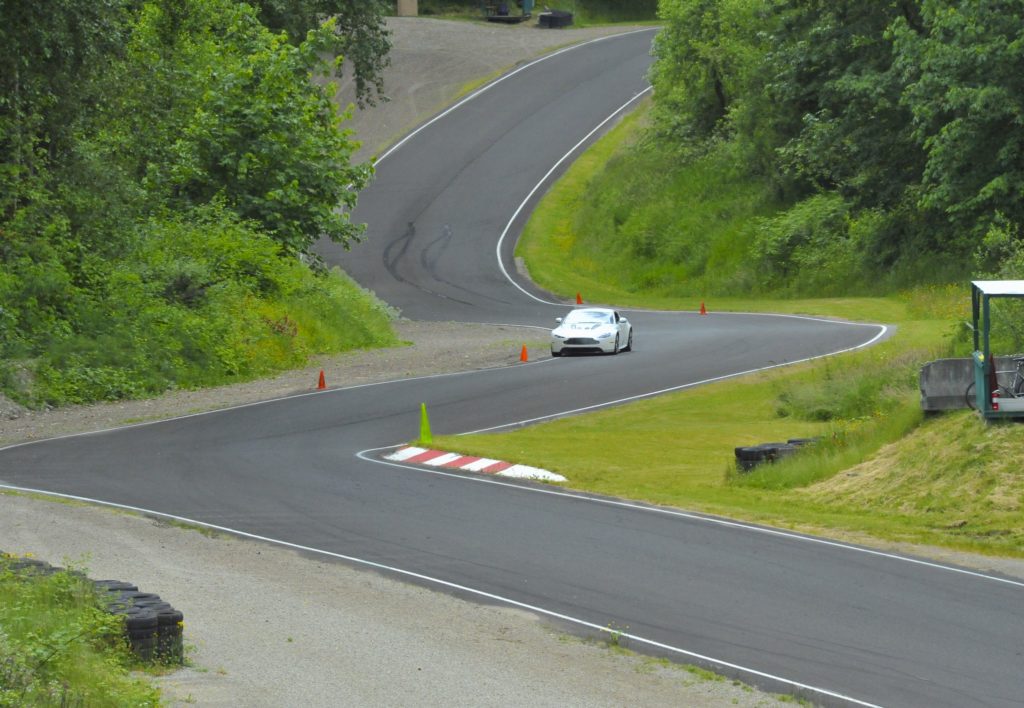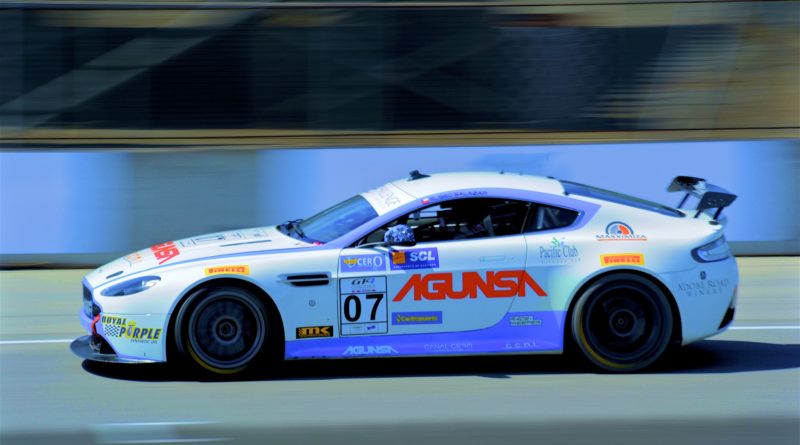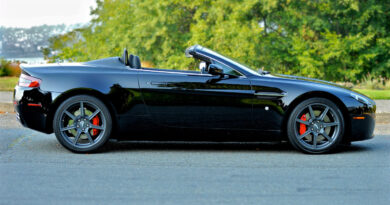A Race Against Myself
It’s raining – hard. We’re at Pacific Raceways in Kent Washington, looking to get in our final day at competition racing school. Naturally, right up to the moment of our final graduation race the two days have been dry and sunny. Now it’s pouring and we get to see if anyone here knows The Art of Racing in the Rain. Don Kitch, Proformance Racing School director and sometime inspiration for Garth Stein’s aforementioned book and movie, is a bit nervous for his students and probably his race-prepped, supercharged Chevy Cobalt SS Coupes.
There’s standing water in places on the track. In unexpected places there are bumps that upset the car’s balance. Traction, throttle and inertia are going to determine where the car goes and who controls it – me or the forces of nature. It’s old school stuff – manual 5-speed transmission with no traction control, dynamic braking or any of those nanny state helpers, which makes what you do or don’t do the only reason you stay on the road. It’s time to seriously re-think how I’m going to get around this track in one piece.
We spend three or four laps in a cloud of rain and mist following the pace car before we are allowed to get on with it. With a reverse grid, as the fastest qualifier I’m last out of ten cars. I’m lost in the clouds of spray thrown up by everyone in front of me. It’s something of a leap of faith. I’m tempted to just follow the spray, but that won’t get me around in one piece. So I spend my warm up laps looking for alternate lines and acclimate to finding my landmarks through the rain. Fortunately, I have a lot of bad weather driving behind me, so when the green flag drops I set off to passing those who are still getting their feet wet.
Accelerating hard out of turn 9 onto the heart of the front straight means I have to control the car’s drift to the left edge with a sensitive right foot. If I apex it right this can be a smooth application to wide-open throttle. But there’s a bump at the edge with a small pool, so modulation and a straight wheel are important if I expect to avoid a serious spin onto the grass or a nice zip across the asphalt into the opposite wall. I get through but there’s no time to gloat because next there’s a kink at the transition from the road pavement onto the drag strip where, depending on how brave I am, I either have to stick with maintenance throttle or squeeze on a bit more to get through another puddle. I make sure to gently turn in and re-center the wheel before I get there, because I know yet another nasty spin (and a wall) could await me. All goes well; next time around I’ll dial in a bit more right pedal.
Every move requires I let the car settle before giving it more input. But I have to be quick and smooth about it, or someone will soon spot where I might be slow. Now I mash the throttle down the straight as the car rips onto the drag strip. It inches towards the left wall deflecting spray off it as I go. Aiming at the tallest fir beyond the track, I’ve set myself up for a well-timed sweep across to the right edge. Don’t let up, I tell myself; this is where I have to max out the straightaway right up to the second of three brake markers. From 125 mph it’s hard onto the brakes, and I feel the rear end wobble as it tries to unweight. This is a dance; I need to be rhythmic and smooth, but committed and still aggressive. Progressively, I let up on the binders and simultaneously turn in with a little trail braking for a second or so. There are two cars on my line; to pass I must venture outside the groove and take them on the high side. Maintaining throttle to the apex of this carousel I try to sense the car’s dynamics. Can I carry a bit more speed entering next time? Can I squeeze in more throttle right here? There’s extra water outside the groove but I start accelerating anyway, letting the car guide itself to the outer apron with my right foot. Whoops! Got a touch too much and the right wheels have gone off and kicked up some dirt. I hold my line, edge it back onto the track and mash the throttle again as the asphalt crests and begins to roll away. I got past those two cars through the carousel but now I’m struggling to see down the hill to that tricky entrance into those tight hairpins.

I’m definitely moving downhill now, and already contemplating how to best attack turns 3a and b. A runout comes into view as the hill reaches its maximum slope; it’s distracting – I stop looking there when I remember the old axiom, ‘the car goes where your eyes go.’ I’ve been hard on the brakes already, anticipating letting up just enough to allow a two-stage turn-in. It’s very easy to come in too hot, and my heart is in my throat trying to maximize speed as I keep on the brakes while turning in and trying to envision the tire’s traction circle. It’s an awkward, downhill hairpin; for me, the most difficult part of this track. Phase one must be accomplished simply as a quick little prelude to executing phase two, because if I get in too deep it will be near impossible to stay on track, much less make the apex. That mantra to be seamless, connected and smooth keeps repeating in the back of my head. Be quick about it! 3a is an orchestra of brake, trail, phase one, look to the apex with phase two, on to the exit target with a quick stab of the accelerator, and then brake and full left turn-in for 3b. Set it quickly. Come on! Squeeze that right pedal again so it makes you unwind the wheel and drifts the car out to the right edge.
Now it’s hard slightly downhill and quickly up through this small swale, moving back to the left side as the track bends a bit right. Braking here is interesting. I think I was told to mind the couple bumps in the braking zone to 5a, but I come in hot anyway, brake late and wham – there are the bumps. Damn it! The car shimmies and I know I’m on the edge. I wait a fraction longer before turning in, to give the car a chance to settle. That was close; I need to be a little easier there as I don’t want to be sent off somewhere into the grass and trees, which are uncomfortably near. Now I have an easy, smooth turn-in to 5a which sets me up to accelerate perfectly and find my target as the track flattens for a brief second before I plunge downhill back to the right. This is a delicate little spot. I apex late so I can stay right to set up a left-hand exit at the bottom of the hill before climbing out along a deceptive, partially blind little stretch. This part is really fun because the car tells you immediately if you’ve done it right by giving a flowing line and easy acceleration out of 5b and through 6. I don’t want to rest on my laurels though, because it’s really easy to accelerate too hard and let the car slip over the right edge where more grass and trees await.
Cresting the hill I keep on the throttle and pass another car putting me on the side opposite where I want to be. I’m looking ahead for the tall Douglas fir that is my target. It means getting to the right out of turn 7 as soon as I can to set up clean braking for turn 8, a big left-hand, 120 degree bender whose exit begins our trek all over again. I need to keep it out there and apex late again or I’ll have to get out of the throttle cuz I’ll be pushed way out right. Coming out of 8 I have to be pointed back to the left edge aiming at the concession stand marking the start of the famous drag strip that dominates the infield. Once I set the car there I can immediately begin turn-in to hit (figuratively!) the corner of the wall marking the apex of turn 9. Doing it right means progressively squeezing the throttle again to flat out as I pass within a foot or two of that 8-foot tall chunk of concrete and drift on out to the left edge of turn 9 where that fun puddle awaits.
In these race-prepped, supercharged Chevy Cobalts, our 20-minute sessions equate to about 10 or 11 laps. With a little luck and some cautious participants I manage to pass all nine of the other cars.
It’s too bad the guy who regularly drives a nanny-laden Nissan Skyline GT-R couldn’t figure out a car without traction control in the rain – he ran his Cobalt off the track twice, red flagging our race a couple laps short of a full session. Afterward, one of my compatriots says he was setting me up to pass just as things ended. I smile and laugh with him. That competitive part of me doesn’t mention I had more left, as I was being cautious, too.
I know in the end it doesn’t really matter. I had a ton of fun, had challenged myself, felt my heart in my throat and came out in one piece. I surprise myself by being the fastest in my class and, having been on a track only once before for the qualifying class a couple months ago, surprise our instructors even more. That was really a wonderful bonus affirmation. After all, like the legendary Sir Sterling Moss once said, “There are two things no man will admit he cannot do well – drive and make love.”
I also think of the fear and trepidation I feel while racing, and I remember Steve McQueen’s thoughts about climbing into a race car: “It’s a beautiful sport, but it’s pretty frightening. Every time I used to get in my car, I used to get scared. I remember my first time out I said to myself. ‘What the hell am I doing here?’… But I like the idea of having to overcome the fright, you know? It’s quite a feeling, a pure feeling.”
Quite possibly the greatest driver who ever lived, Sir Sterling Moss said, “Bravery and stupidity are quite often the same thing. If you have to use bravery in racing, then you’re being stupid…. There were times, I must admit, where I required, I suppose one could say, bravery because I was overcoming a fear. It requires enormous concentration and control of your mind.” Even though Sir Sterling seems to be contradicting himself, I think he is really trying to distinguish between bravery and bravado; self-doubt and foolhardiness.
Knowing all that, I no longer feel quite so inferior, or as if I don’t really belong. I’m not the only one who feels that fear in my stomach; everyone does. I know that fright Steve McQueen talked about and the thought of, ‘what am I doing here?’ But, as Sir Sterling relates, it’s what you do with it, how you control your mind to push to the limit. With that there’s always the question, ‘Is your limit the real limit?’ The fear never leaves you, but you do learn about it and your relationship to it. And that tells you something about who you are.
Now, if only racing were a whole lot cheaper….





Love it – spent the whole time wondering if I could beat you – ha!